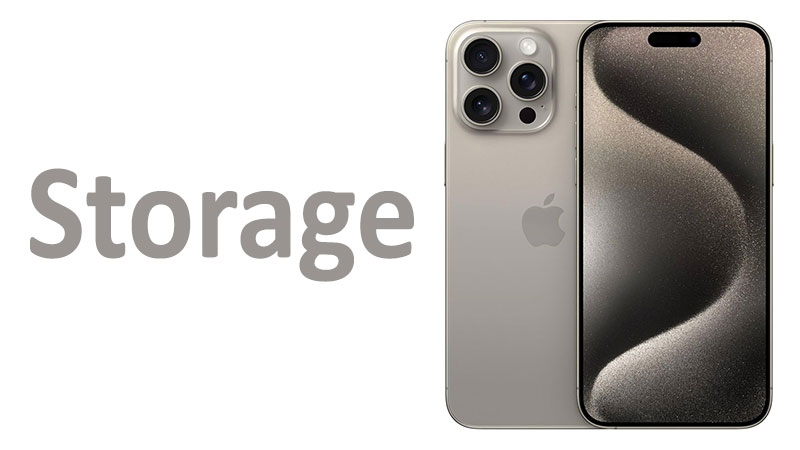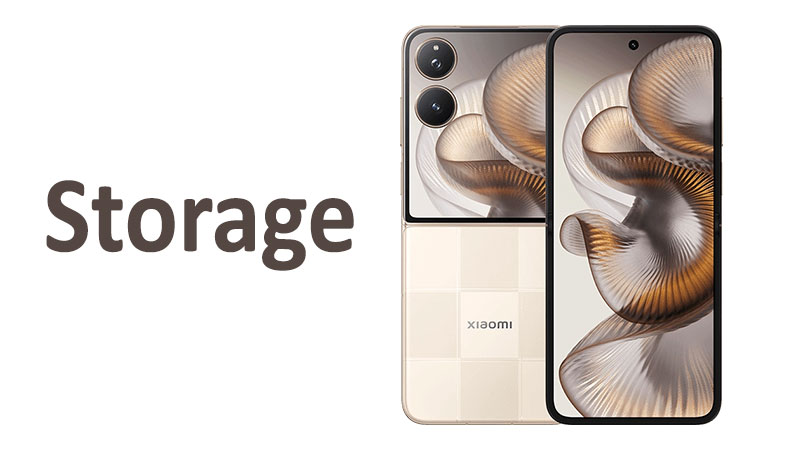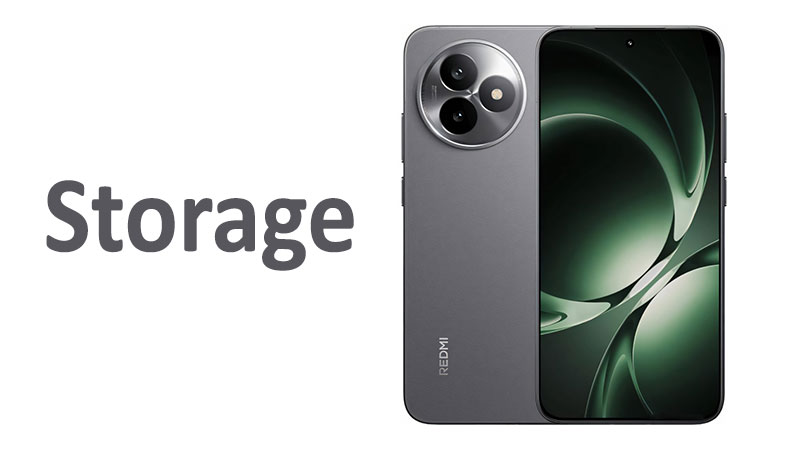The Apple iPhone 15 Pro Max storage system is fundamental to its role as a flagship device. For professional users and digital creators, choosing the right memory capacity is a critical business decision. This choice affects workflow efficiency and the ability to capture high-quality media on the go. The iPhone 15 Pro Max is equipped with the fastest available proprietary NVMe technology. This ensures that every configuration, from the entry level to the massive 1TB option, performs without compromise. This comprehensive buyer’s guide details the storage tiers, explains the advanced NVMe and RAM architecture, and offers crucial advice for maximizing your investment. Understanding these technical specifications is essential for unlocking the full potential of this powerful device.
Configuration and Performance Architecture
The iPhone 15 Pro Max is the ultimate powerhouse in Apple’s lineup. Consequently, its storage configurations start at a higher baseline. They also include enhanced RAM capacity to handle demanding Pro workflows. The combination of larger storage, increased RAM, and the fastest NVMe technology ensures unmatched performance.
Premium Storage Tiers and 8GB RAM
The iPhone 15 Pro Max offers three high-capacity storage tiers. Apple pairs all of them with a generous 8GB of RAM. This increased memory, compared to the base models, is vital for the Pro Max’s exclusive features. These features include console-level gaming and advanced video editing applications.
The storage configurations are:
- 256GB Internal Storage with 8GB RAM
- 512GB Internal Storage with 8GB RAM
- 1TB Internal Storage with 8GB RAM
The minimum capacity starts at 256GB. This reflects Apple’s understanding that Pro Max users require more space right out of the box. They typically engage in high-data activities like shooting in ProRes video and capturing large ProRAW photos.
The Significance of 8GB RAM for Pro Workflows
The inclusion of 8GB of LPDDR5 RAM is a major upgrade for the Pro Max series. This additional working memory is crucial for maintaining fluid performance under extreme load. For example, running computationally intensive applications like DaVinci Resolve or high-fidelity AAA games requires substantial RAM.
The 8GB capacity allows the phone to keep more large applications active in the background. It prevents the system from aggressively closing apps. This dramatically improves multitasking. Furthermore, when editing 4K video streams directly on the device, the larger RAM buffer accelerates rendering and scrubbing through timelines. The 8GB RAM is a fundamental component that justifies the “Pro” moniker. It truly enables professional-level mobile computing.
Specialized Comparison: iPhone 15 Pro Max vs. iPhone 14 Pro Max
The iPhone 15 Pro Max represents a significant performance leap over its predecessor, the iPhone 14 Pro Max. The iPhone 14 Pro Max was typically configured with 6GB of RAM. The upgrade to 8GB of RAM in the 15 Pro Max is a noticeable architectural change.
While the capacity tiers (256GB, 512GB, 1TB) remain similar, the extra 2GB of RAM in the 15 Pro Max directly impacts sustained performance. Users upgrading from the 14 Pro Max will experience smoother transitions during heavy gaming and more reliable memory management during demanding tasks. This RAM bump is arguably more important than the capacity itself for raw system performance. It future-proofs the device against increasingly memory-hungry applications.
The Engine of Speed: NVMe Storage Technology
All iPhone 15 Pro Max storage relies on Apple’s proprietary NVMe (Non-Volatile Memory express) flash storage. NVMe is an advanced communication protocol. It ensures the phone’s powerful A17 Pro chip can instantly access the stored data. This high-speed integration is critical for supporting the device’s demanding capabilities, especially in content creation.
Deep Dive into NVMe Speeds and Latency
The NVMe storage in the Pro Max is custom-tuned for low latency and high throughput. Latency is the delay before data transfer begins. Low latency is key to making the operating system feel instant and responsive.
The Pro Max’s NVMe system achieves incredibly fast sequential read and write speeds. These speeds are essential for quick file transfers and app installations. However, the system truly shines in random read and write operations. These metrics dictate how fast the phone can access many small pieces of data scattered across the drive. When multitasking or loading complex game scenes, the superior random performance of NVMe delivers a significant, tangible speed advantage. This performance level is crucial for the Pro Max user who deals with massive data streams.
NVMe and Professional Video Workflows
The high-speed NVMe is non-negotiable for the Pro Max’s signature features. The phone supports external recording of high-bitrate ProRes video directly to an external USB-C drive.
However, the internal NVMe speed is also vital. The internal storage buffer manages the initial rush of data when shooting uncompressed video formats. Without the ultra-fast NVMe, the phone could not sustain these high data rates without dropping frames. This internal speed also enables lightning-fast file management and editing. A user can transfer gigabytes of recorded footage within seconds, greatly accelerating their post-production workflow.
Specialized Comparison: Pro Max NVMe vs. Competitor UFS 4.0
The iPhone 15 Pro Max’s NVMe is often compared to the latest UFS 4.0 standard used in many top-tier Android flagships. While UFS 4.0 offers phenomenal sequential speeds, Apple’s NVMe maintains an edge in real-world application performance.
Apple engineers their NVMe controller to align perfectly with the iOS and A17 Pro processor. This tight hardware-software optimization often results in better sustained performance and lower thermal throttling during prolonged, heavy usage. For professional tasks, where stability is as important as speed, the customized NVMe provides a more reliable foundation than the mass-market UFS standard.
Capacity Analysis: A Buyer’s Guide to Tiers
Choosing the right storage capacity is the most critical financial and workflow decision for the Pro Max buyer. The phone’s fixed storage requires careful projection of future data needs. The Pro Max features, such as ProRes video, consume space at an accelerated rate.
256GB: The Professional Entry Point
The 256GB configuration is the minimum offering for the iPhone 15 Pro Max. This capacity is suitable for professionals who are highly disciplined with data management.
Pros and Cons of 256GB
Pros:
- Offers the lowest purchase price, making the Pro Max accessible.
- The capacity is sufficient for ProRAW photos and moderate media.
- It retains the essential 8GB RAM and NVMe speed for powerful performance.
Cons:
- ProRes 4K/60fps video recording will consume all space extremely quickly.
- Requires mandatory and frequent offloading of large files to external drives.
- This capacity restricts you from keeping a large local library of games or movies.
Ideal User Profile for 256GB
This model is best for a professional who primarily offloads data immediately after capture. For example, a photographer who uses the iPhone for occasional high-quality shots. This user must be comfortable using an external SSD connected via the USB-C port for video storage. They treat the internal memory as a temporary buffer, not a permanent archive.
512GB: The Creator’s Sweet Spot
The 512GB model offers a generous capacity buffer. It is often considered the ideal balance for professional users. It provides enough space for several hours of high-quality footage and a large media library.
Pros and Cons of 512GB
Pros:
- Excellent balance of capacity and cost for serious creators.
- Provides comfortable working space for local editing projects.
- Minimizes the need for constant, immediate data offloading.
Cons:
- Still vulnerable to being filled during an extended, high-volume video shoot.
- Requires a substantial jump in initial investment over the 256GB model.
Ideal User Profile for 512GB
The 512GB Pro Max suits the daily content creator or heavy mobile gamer. This user records a lot of 4K video and takes many photos. They need to keep their current projects and a sizable entertainment library local. They want the freedom to shoot for a full day without worrying about storage warnings. This capacity greatly enhances workflow convenience.
1TB: The Ultimate Digital Archive
The 1TB configuration offers the maximum internal capacity for the iPhone 15 Pro Max. This is the choice for the digital maximalist and the non-stop professional filmmaker.
Pros and Cons of 1TB
Pros:
- Provides immense, worry-free storage for virtually unlimited mobile media creation.
- Essential for long-term storage of multiple large, high-bitrate video projects.
- Offers the best future-proofing against the continued growth of file sizes.
Cons:
- Requires the highest premium investment, often making the phone significantly more expensive.
- The capacity may be overkill for users who are not professional creators.
Ideal User Profile for 1TB
The 1TB Pro Max is tailored for filmmakers, long-haul travelers, and researchers. They need to store massive data sets offline. This is the only configuration that allows a user to shoot multiple hours of ProRes video and still have space for all their apps, games, and music. This capacity turns the phone into a truly self-contained, high-end mobile production unit.
Buyer’s Checklist: Constraints and Future-Proofing
The choice of storage for the iPhone 15 Pro Max must be approached as a long-term investment. Pro users must fully understand the device’s constraints and features.
The Fixed Storage Dilemma: No Card Slot
The iPhone 15 Pro Max, consistent with all Apple smartphones, does not feature a memory card slot. This is the most crucial constraint for the buyer. Your capacity choice is final and cannot be expanded cheaply later.
While the new USB-C port allows high-speed external SSD connections, this is not a substitute for internal storage. The internal NVMe memory is always available. An external drive is an added accessory that you must physically carry and connect. Therefore, do not rely on external drives to cover a shortfall in your internal storage choice. Size up your internal capacity if you anticipate any long-term shortage.
Harnessing External Storage via USB-C
The USB-C port on the iPhone 15 Pro Max is a game-changer for content creators. It supports USB 3 speeds (up to 10Gb/s). This speed allows high-bitrate ProRes video to be recorded directly to an external SSD.
This feature is a key way to conserve internal storage. However, you must buy a compatible, fast external drive and the correct USB-C cable. While this saves internal space, it also adds complexity to the recording setup. The choice depends on whether you value minimal gear (more internal storage) or maximum recording time (external recording).
Future-Proofing for 8K and Beyond
File sizes continue to grow rapidly. Future iOS updates, camera features, and high-fidelity games will all demand more storage. Choosing the 1TB option provides maximum future-proofing.
The 256GB model, despite its speed, offers the least protection against data inflation. As Apple introduces more computationally demanding formats, having the 8GB RAM and a large capacity like 512GB or 1TB ensures the iPhone 15 Pro Max remains a professional tool for its full expected service life.
Pros and Cons of the iPhone 15 Pro Max Storage System
The storage architecture of the Pro Max is designed for performance at a premium. Reviewing its strengths and weaknesses provides clarity for the buyer.
Advantages of the Pro Max Storage
The storage system delivers high-level performance essential for professional tasks.
- Best-in-Class Speed: The NVMe technology ensures unmatched random access speeds for all operations.
- 8GB RAM: The increased RAM enables superior multitasking and efficient handling of intensive Pro applications.
- Highest Capacities: The option for 1TB of storage eliminates space concerns for nearly every user profile.
- USB-C External Recording: The system is optimized to use external drives for limitless video recording.
Disadvantages and Limitations
The high-performance architecture comes with specific drawbacks related to cost and flexibility.
- Highest Cost Premium: The price jump to higher capacities is significant, reflecting the cost of integrated NVMe memory.
- Fixed Storage: As always, there is no ability to cheaply expand storage with an external card.
- 256GB Minimum: The starting capacity is still limiting for serious ProRes video capture, effectively forcing an upgrade for filmmakers.
Key Takeaways for Pro Max Buyers
The decision is ultimately a balance between current budget and future workflow needs.
- Do Not Buy 256GB for Video: If you plan to shoot any ProRes or cinematic video, the 256GB model is insufficient. It is primarily for still photography.
- 512GB is the Pro Sweet Spot: Most professional users will find the 512GB model offers the best combination of internal freedom and cost.
- 1TB for Archives: Only choose 1TB if you absolutely must keep long-term video projects or a massive media archive directly on the device.
- Value the 8GB RAM: Remember that the 8GB RAM is available on all storage tiers. You always get the highest performance, regardless of the storage size.
Conclusion
The Apple iPhone 15 Pro Max storage system provides a robust, high-performance foundation for demanding users. Its key specifications—NVMe flash memory, 8GB of RAM, and capacity up to 1TB—are tailored for professional content creation. The NVMe system ensures exceptional speed, vital for heavy multitasking and video stream management. Meanwhile, the 8GB of RAM provides the necessary breathing room for pro-grade applications.
The most critical factor remains the absence of a memory card slot. This mandates a careful, forward-looking capacity choice. For the majority of advanced users and creators, the 512GB model offers the optimal intersection of capacity and cost. It provides sufficient buffer for most projects. Only professional filmmakers with extreme storage needs should opt for the 1TB option. By prioritizing capacity and understanding the demands of ProRes video, buyers can choose the right iPhone 15 Pro Max configuration to support their demanding digital life.
FAQ
Is the iPhone 15 Pro Max available in a 128GB capacity?
No, the iPhone 15 Pro Max starts at a minimum internal storage capacity of 256GB.
Does the iPhone 15 Pro Max have more RAM than the standard iPhone 15?
Yes. The iPhone 15 Pro Max includes 8GB of RAM, compared to 6GB in the standard iPhone 15 models.
What kind of storage technology does the iPhone 15 Pro Max use?
It uses high-speed, proprietary NVMe (Non-Volatile Memory express) flash storage for rapid data transfer.
Can I record 4K ProRes video directly to the internal storage?
Yes, but the high-bitrate ProRes video consumes internal storage extremely fast. External recording via the USB-C port to an external drive is recommended for long takes.
Does the 1TB iPhone 15 Pro Max perform faster than the 256GB model?
No. All iPhone 15 Pro Max storage tiers use the same NVMe technology and 8GB RAM, so performance speeds are identical.



